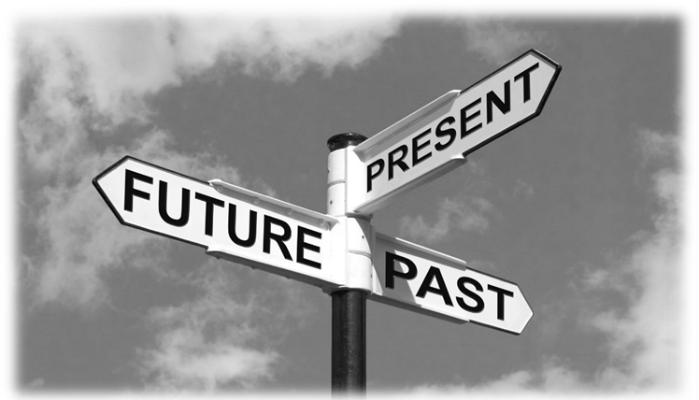
A conversation with a colleague had me thinking of how I work and add value. I said to him that I work in the future. When a project gets started, all I see is results and potential, and I know instinctively what needs to be done to get there; but not everyone is like this. In fact, I've learned to curb my enthusiasm and focus on making the case for change with those who are resistant in order to be successful.
I wondered if people could be described and communicated to appropriately through their 'working tense.' I also wondered if there were positives and negatives based on the tense you comfortably worked in.
The Past
Positive - Those that work in the past can be a great source of corporate memory for your organization. What were the issues, what were the solutions, why did they succeed or fail?
Negative - They hold on to the past and are not willing to let go. They constantly talk about how good things used to be and are resentful of change.
Solution - Ensure you respect and pay homage to the past, while making a case for why things must change. It's not about what is right or wrong, but how to move forward successfully. Also highlight the positive impacts of changes in the organization's history.
The Present
Positive - Those that work in the present have a great sense of the here and now. They enjoy the moment and the journey. They know where the organization is right now and are often the experts in operations, process and systems.
Negative - They sometimes enjoy the journey more than the destination or the result. Let's keep doing things the way we've always done them. There is a comfort level with the here and now and sometimes not the intensity to be flexible with change.
Solution - Use a change forum to map out what stays the same and what changes. Engage these employees to help you figure out how to move from the present to the future program comfortably. Explain the new reality that is driving changes in direction.
The Future
Positive - Those that work in the future tend to be the early adopters and visionaries. They love trying new things, new technologies and processes. They love change.
Negative - Sometimes changing too often can get tiresome for the masses. There is difficulty sticking to one solution and staying with a long-term plan. They can push too hard and too fast which could end up failing for a company that is resistant to change. They can also get frustrated with others who aren't as adaptable.
Solution - Ensure you are communicating the plan. Where we are today and where we want to go and by when. Have milestones to ensure that you are celebrating success along the way so that progress can be visible. Engage these employees in solution building and testing new solutions.
I think the bottom line is that we are all unique and bring different perspectives to programs. Sometimes an individual on any given day or based on a specific program can work in the past, present or future. By truly knowing our audience, their strengths and their concerns, we can create communication programs and messages to engage all of them along the way.
If you found this post helpful, you’ll also enjoy our newsletter. It’s a monthly collection of ideas, resources, and inspiration for those passionate about enabling, engaging and empowering employees through strategic internal communication.